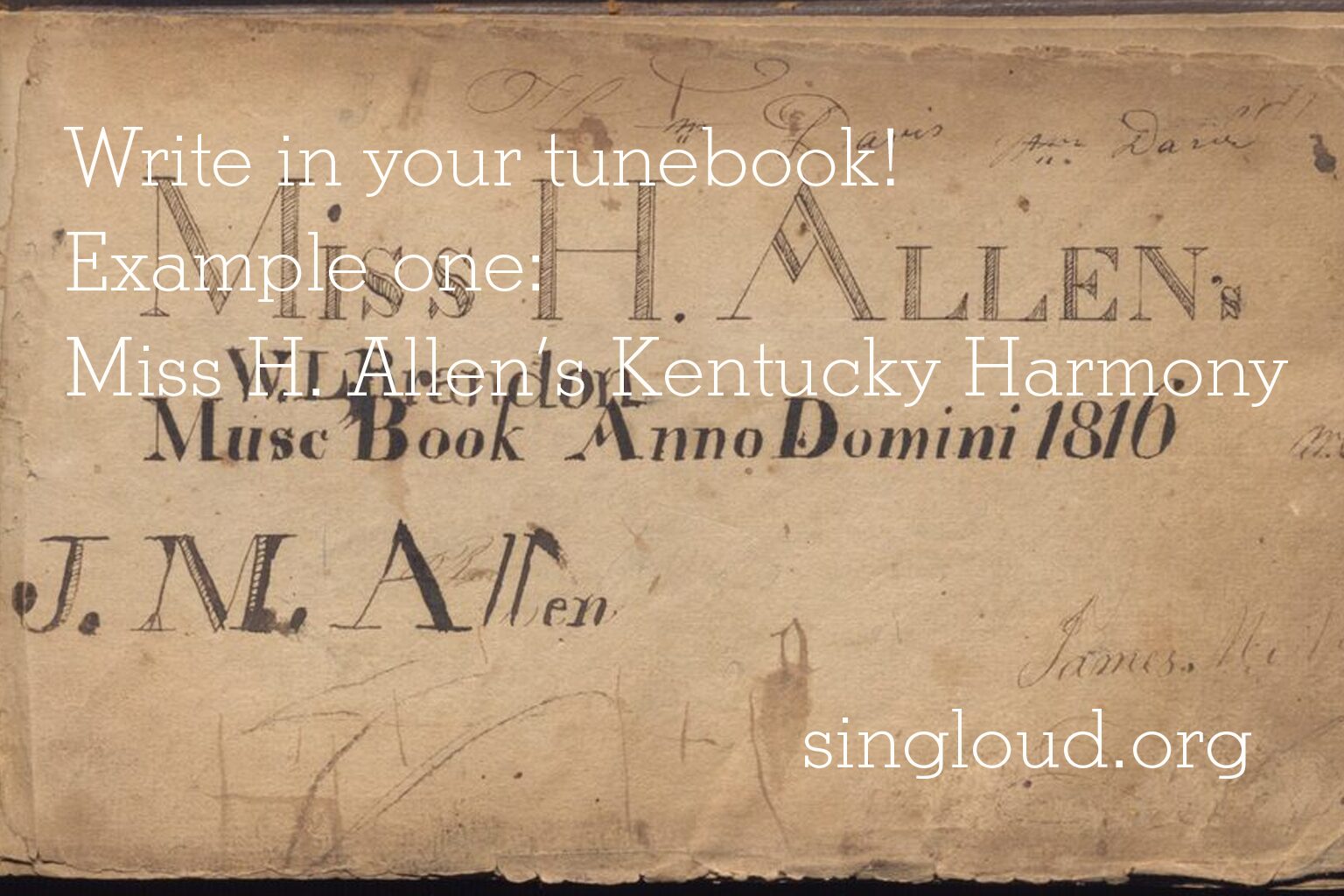The very first thing a singer should do when receiving a new tunebook is simple: write their name in it, along with the date they took possession. It’s a practical act—but I would also suggest it’s a spiritual one.
In putting your name and the date inside the front cover, you’re doing more than marking ownership. You’re acknowledging a bond with the book, and with the tradition it represents. That inscription may one day matter—not just to you, but to others who come across your book in the years to come.
If your tunebook was given as a gift, ask the giver to inscribe and date it as well, then add your own name and the date you received it. These layered inscriptions tell a story—not just of music, but of friendship, memory, and continuity.
This simple act has roots stretching back to the earliest days of shape-note singing—and indeed, to the history of book ownership itself. From time to time, I’ll share examples of such inscriptions here that I think may interest fellow singers.

Below are pages from Ananias Davisson’s 1816 tunebook “Kentucky harmony, or, A choice collection of psalm tunes, hymns, and anthems,” apparently formerly owned by “Miss H. Allen,” “W.L. Brandon,” and “J.M. Allen.”





These pages are courtesy of The Claremont Colleges Library, Special Collections: McCutchan M2116 .K468 1816: https://tcclsc.omeka.net/exhibits/show/mus120/item/565


Leave a Reply